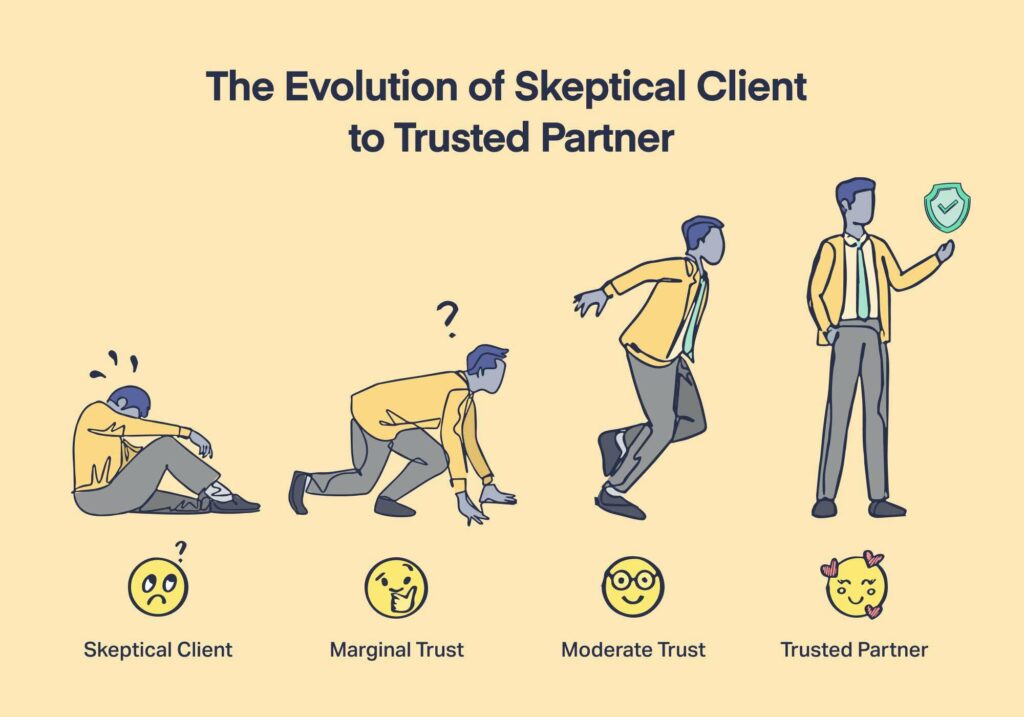
An agency—a WhatConverts user—was in a tough spot.
Results for a longtime client had dropped last month (and by more than just a little).
Now, the decline wasn’t the agency’s fault; a new competitor with a bulky budget had just entered the market. But even still, no one likes to see a dip in leads. And this bad news risked tarnishing an otherwise perfect relationship.
To complicate things even more, the agency was in the middle of raising prices—exactly the thing an already peeved client might consider their “last straw”.
So, what was the client’s response?
“Thanks for the charts, (they explained everything perfectly!)
Of course, no one likes price increases, but we get it 100%.
And one of the many nice things I can say about you is that we trust you 110% (your word is Gold with us), you have always been super honorable and upfront!
So, the new price for the next invoice is ok!
PS- Keep up the good work, we appreciate you and your team very much!”
Bad news is inevitable in marketing—no one’s perfect.
But with these 5 client retention strategies, you can turn that bad news blemish into a trust-building opportunity.
Trust – Key to Marketing Customer Relationship Management
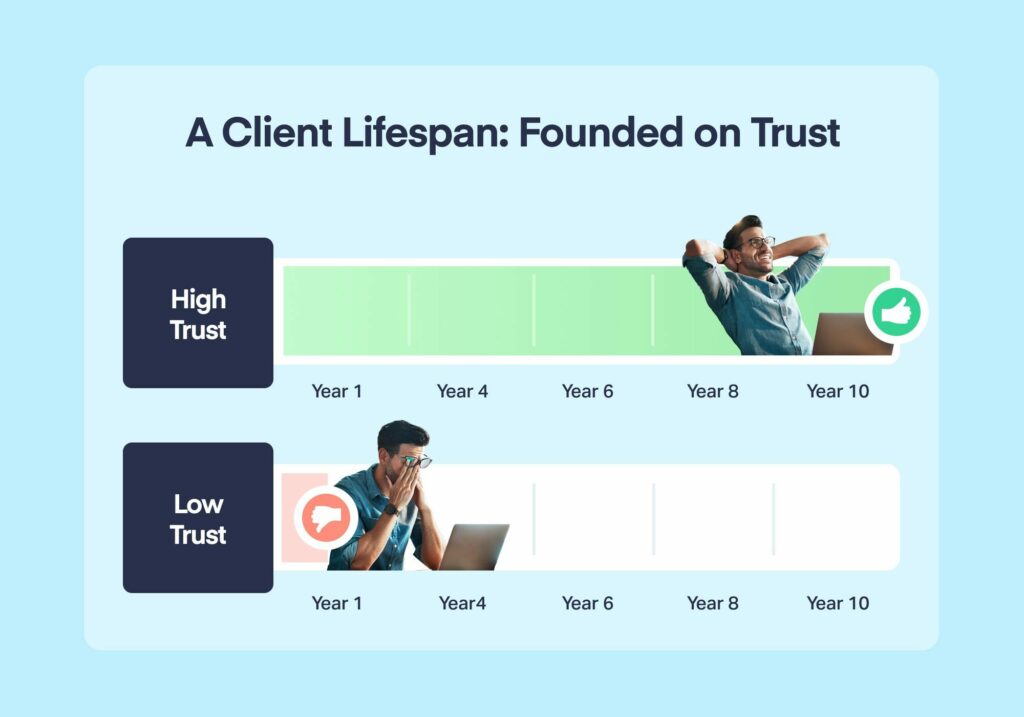
We all know the trust factor is huge when it comes to client retention.
But what do the numbers say?
Here are some stats on trust and client churn for marketing agencies.
- The average client lifespan for 50% of marketing agencies is under 2 years, with 25% reporting under just 1 year.
- 36% of agencies report effective communication/transparency being the #1 factor influencing client retention.
- Agencies with high rates of trust among clients saw 25% less client churn than average (8% among agencies making $40K MRR).
- 4 out of 5 marketing clients believe transparency is key to a successful agency-client relationship. But just 56% of respondents reported having that kind of transparency (a 24% gap).
- 60% of marketing agencies say client retention (not new clients) is the key to growth.
Trust matters. And the more of it you build, the longer your clients stick with your agency.
5 Client Retention Strategies for Building Trust with Bad News
So, how can you build a solid groundwork of trust with your clients, even in the face of bad news?
1. Anticipate Problem & Come to the Table w/ a Solution
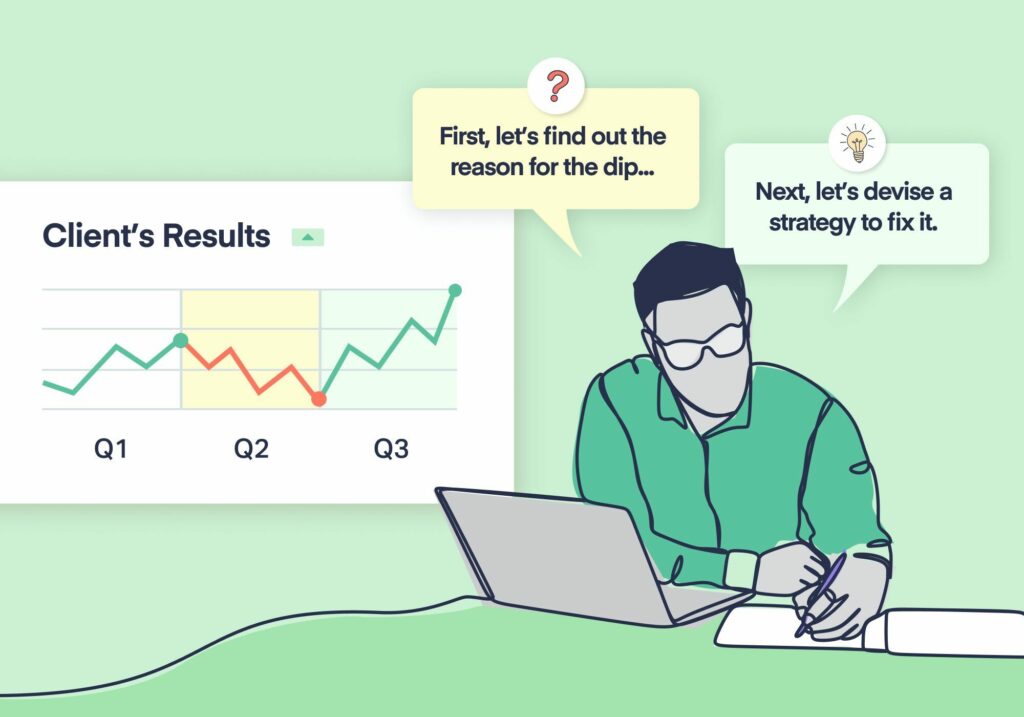
What’s worse than a client getting bad news?
A client getting bad news and having to tell you about it.
Proactive communication of a problem shows:
- You’re aware of the situation
- You intend to fix it
When problematic results pop up, schedule a meeting to discuss and (most importantly) come prepared. Develop a fully fleshed-out strategy for fixing the problem and come ready to present it to the client.
You should also anticipate any concerns and come with the data in-hand you need to address them.
For example, if a high-spending competitor just entered the market, come with data like:
- Impression share distribution (Google Ads Auction Insights)
- Keyword ranking comparisons (Ahrefs)
- Competitor PPC keywords, paid clicks, and ad budgets (SpyFu)
- Changes in lead generation results like quality or quantity (WhatConverts)
That way, instead of saying “I’ll get back to you on that” and letting their doubt fester, you can answer questions in the moment—a massive boon for trust building.
Case Study: Tampa Agency Skyrockets Lead to MQL Rate by 92% In <5min
Lawnline Marketing used WhatConverts to detect, analyze, and diagnose a problem with their client’s LSA campaigns in just a few clicks. With that information, they formulated a solution that boosted their lead to MQL rate by 92%.
2. Set Reasonable Expectations
More than 7 out of 10 marketers struggle to meet client expectations.
Increasing complexity is partly to blame here (changing privacy concerns, more data sources to reconcile, rapid AI development).
But the real culprit is an inability to set realistic expectations.
A bar set too high might drive enthusiasm and earn a new client, but once they see you can’t meet that bar, they’re likely to jump ship.
On the one hand, that means underpromising and overdelivering. Set reasonable goals backed up by clear KPIs, timelines, and specific targets (a.k.a. SMART goals).
But that also means nipping unrealistic client expectations in the bud. A client might think hiring a marketing agency is going to bring in 5X more qualified leads in a week. But it’s your job to temper their expectations and bring them back down to earth.
Check out the guide below to learn more on how to keep client expectations reasonable.
Read More: Unrealistic Client Expectations Kill Agencies: 5 Pro Ways to Manage Them
3. Focus on the Needle-Moving Metrics
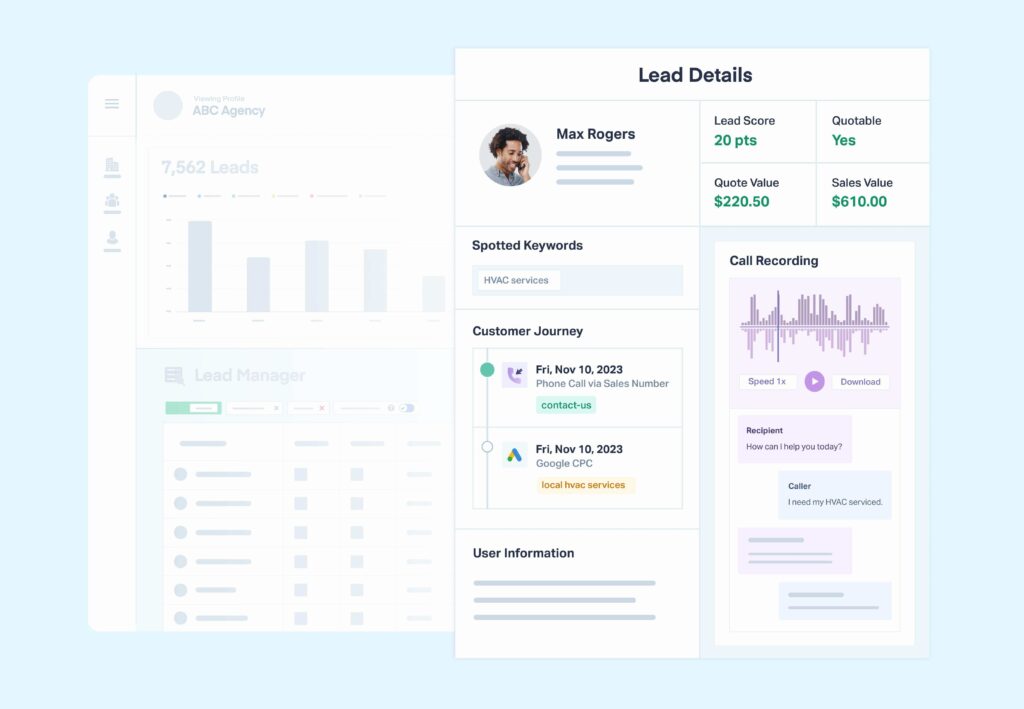
A lot of marketing reporting relies on proxy metrics of success.
For example, a client may be interested in impressions, clicks, social shares, page views, etc. These metrics are all easy to track. And many clients see them as indicators of a marketing campaign that’s working well.
The problem is these metrics don’t always translate into wins. A 10X jump in social shares might look good, but it in no way means an increase in sales.
What matters for businesses (and what your reporting should focus on) is the return on investment—ROI.
Is your marketing earning more money than what was invested?
When you focus on the metrics that do translate into revenue—lead quality, lead value, ROI—a dip in proxy metrics like clicks or impressions won’t matter.
The only challenge is finding marketing reporting software that lets you capture this kind of data (read more on that below).
Read More: 9 Best Marketing Reporting Software for Agencies in 2023
4. Consistent Wins > Sporadic Grand Slams
Massive short-term spikes look great on paper.
Clients get excited, they imagine the trend continuing, and the possibility of growth becomes endless.
But 90% of the time these spikes are accompanied by equally dramatic drops. And that can be frustrating for clients.
Rather than looking for that next big win, focus instead on small repeatable improvements.
Let’s say you’re managing several successful campaigns across Google Ads for a client. Rather than siphoning budget towards untested channels (LinkedIn, YouTube, Meta) in hopes of a big win, look for small but meaningful improvements you can make within Google Ads.
Find what’s working in the data and then iterate. Again, and again, and again…
The more consistent growth you can show, the more clients will trust that any dip in results is only temporary.
Case Study: 27X ROI & 38% Yearly Growth Using WhatConverts
EngNet, an engineering-focused digital marketing agency, used WhatConverts to optimize their Google Ads campaigns and achieved 38% yearly growth over 8 years (a 27X ROI).
5. Answer Questions with a Data-Rich Track Record
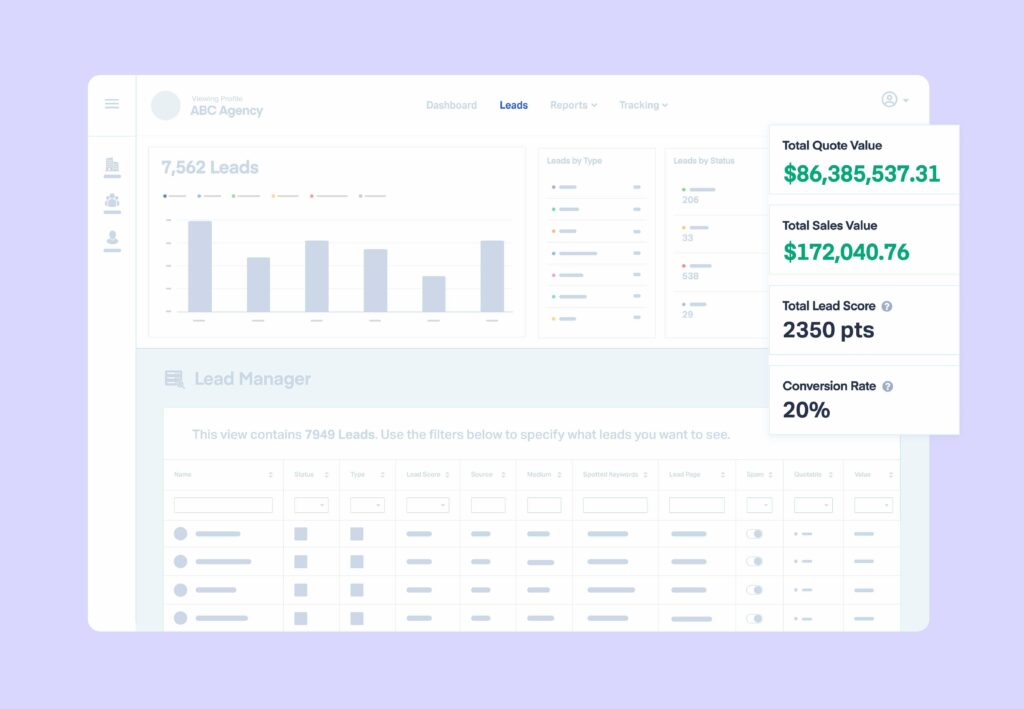
One of the best ways to inspire trust in the face of bad news is to point to a track record of consistently solid results.
Now, achieving consistent results is one thing. Proving those consistent results is another.
A lot of lead tracking tools out there may collect data.
But few make it easy to display and interrogate that data so that it answers your client’s questions.
For example, let’s say you run into a bad month and are showing your clients your historical results so they’ll trust that these bad results were just a fluke. 120 leads one month, 145 the next, then 180, etc.
But then, a curveball. Your client begins asking questions:
- How many of these leads were spam?
- How many were repeat customers?
- Are these leads even part of our target audience?
With the wrong software, you’d have to spend hours building those reports.
But with the right lead tracking tools (like WhatConverts), you can drill down into individual lead data. You could easily see which leads had legitimate contact info, filter leads by repeat/unique customers, listen to call recordings to evaluate lead quality—all without ever leaving the dashboard and all in just a few clicks.
Not only can you show the historical results of your marketing (+1 for trust), but you can also prove those results by answering client questions in real time (+2 for trust).
Read More: Build Trust & Transparency with Clients Using Lead Manager
Wrapping Up
No client likes to hear bad news, especially when it impacts their bottom line.
But when you follow these 5 strategies, you can turn a tough client conversation into an opportunity to build trust and improve your agency/client relationship.
Now all you need is the right tool.
Start building trust with your clients today with a free 14-day trial of WhatConverts!
Get a FREE presentation of WhatConverts
One of our marketing experts will give you a full presentation of how WhatConverts can help you grow your business.
Schedule a Demo
Grow your business with WhatConverts





